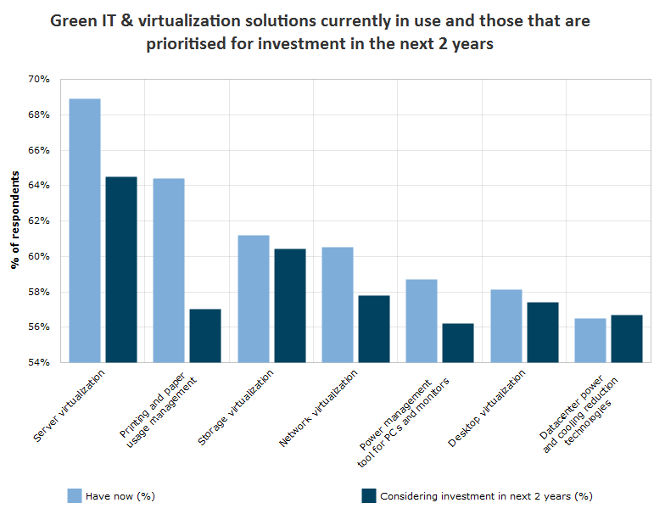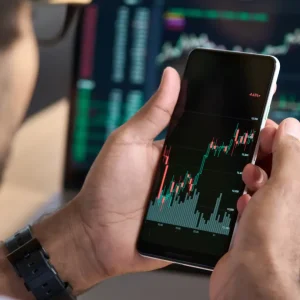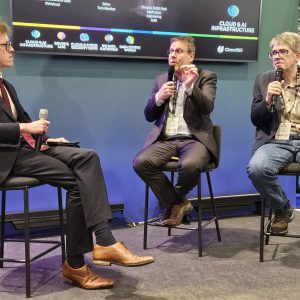
Server virtualisation is the leading type of environmentally-friendly green computing, and is likely to remain so throughout the next year.
Some 68% of IT departments were using server virtualisation in the end of 2014, according to data from Kable Market Intelligence, a figure likely to drop by just a few percent to 64% within the next two years.
The technology allows IT admins to divide a single server into a number of virtual environments, and can be more efficient than traditional server use, which in turn minimises power consumption.
Tackling another source of green concern, printing and paper management was the next most commonly used type of green computing, with 64% of those surveyed saying they had such a tool in place.
However spending on paper management is likely to diminish over the next year, with the data indicating only 57% plan on using it in the near future.
Other popular forms of virtualisation in use were storage and networking virtualisation, both used by six out of ten IT departments quizzed.
Storage virtualisation requires admins to create what appears to be a single source of storage out of several actual sources across a network, whilst network virtualisation involves amalgamating various hardware and software into a centralised software entity.
Data centre power reduction and cooling had the lowest adoption of any of the technologies mentioned by the respondants, being used by little more than 56% of those surveyed.
It was however the only category in which use was predicted to increase over the course of the next year, albeit by less than a percent of those surveyed.
Kable questioned 2,685 people in IT decision-making roles from across the globe at the end of 2014 for the survey. The research firm can be subscribed to at its website.






